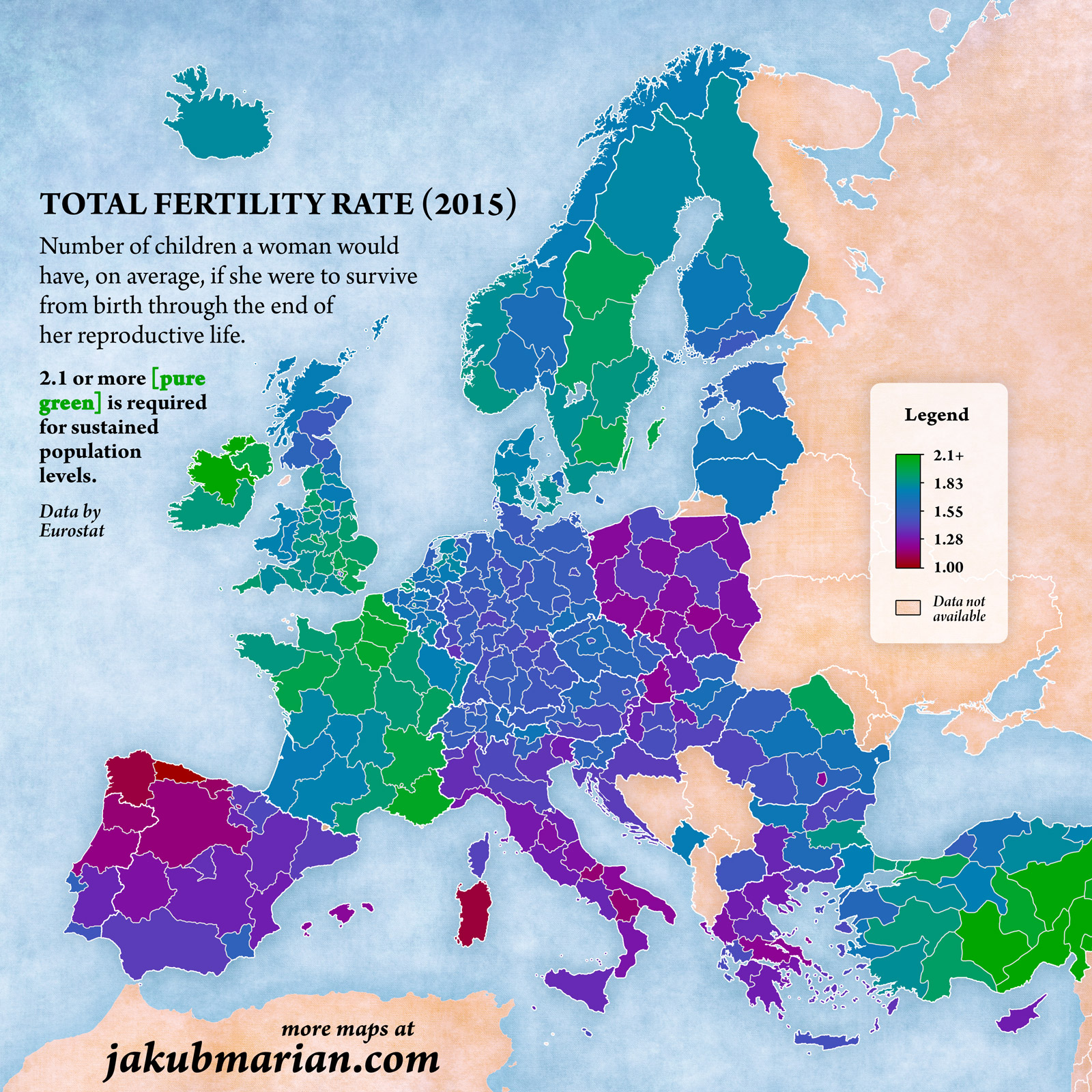The total fertility rate is defined as the average number of children a woman would have over her lifetime if she were to survive from birth through the end of her reproductive life and experience the exact current age-specific fertility rates through her lifetime. This is a rather technical definition, so to put it bluntly: The total fertility rate tells us how many children per woman will be born, on average, if everyone keeps trying to have children at the same rate as they do now, according to their age.
The most important figure to keep in mind when discussing fertility rates is the so-called replacement rate (or “replacement-level fertility”). It is the fertility rate at which the size of the entire population will remain stable, when mortality is taken into account and migration ignored. The replacement rate is approximately 2.1 in most developed countries (that is, 9 out of 10 women should have two children and 1 out of 10 women should have three), but it is somewhat higher in developing countries due to higher mortality rates.
As you can see on the map below, the situation in Europe does not look very bright. Most of Europe is dying out—some regions, such as Galicia in Spain and Sardinia in Italy at extraordinarily low fertility rates close to 1 child per woman:

The map above represents the true demographic ticking time bomb of Europe. As the population becomes significantly older than it is now, there will be fewer economically active people, which will lead to consequent pension funding issues.
While many other problems we are facing do not have a simple solution, this one does: People simply have to be more willing to make actual babies, not just “make babies”. The real question is how to motivate the younger generation to do that.
 Tip: Are you a non-native English speaker? I have just finished creating a
Tip: Are you a non-native English speaker? I have just finished creating a  Web App
Web App
